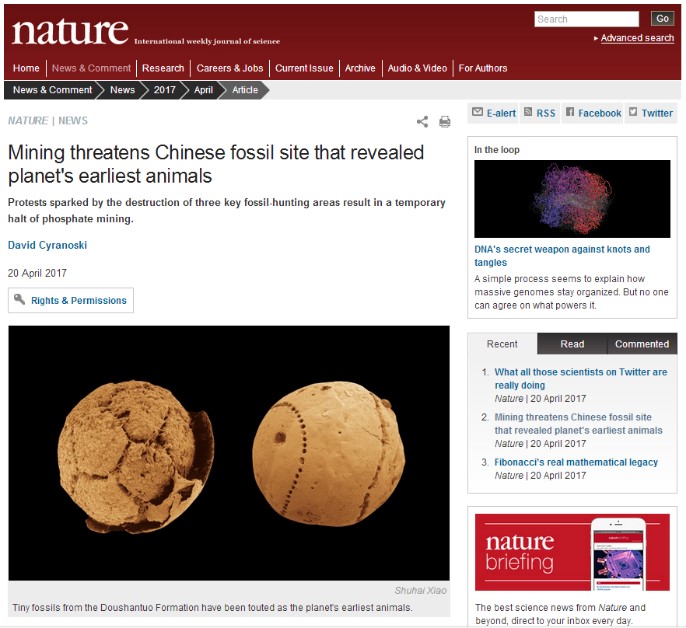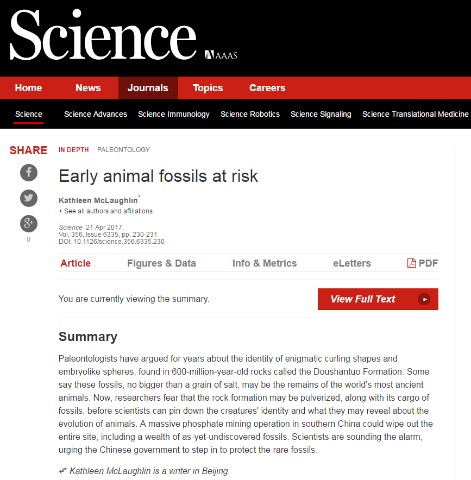
From April 1st to 3rd, the International Symposium for Conservation and Scientific Research on Weng’an Biota was held in Weng’an County, Guizhou Province, China. The symposium was co-organised by NIGPAS, Weng’an local government and Guizhou University.
The symposium was focusing on the phosphate mining in Weng’an, which was stopped due to its threatening to the outcrops of the 600-million-year Doushantuo Formation containing well-preserved sponges and embryos of the earliest animals on Earth. The 3D preservation with cellular and subcellular structures of the fossils in the phosphate rocks has made Weng’an a unique geological window to the earliest evidence of animal evolution. Over 20 years, the discoveries in Weng’an have attracted the world’s attention and foretold the undiscovered possibility.
In order to keep the fossil remains from being pulverized by phosphate mining, the scientists from several countries gathered in Weng’an and talked with the government officers face-to-face. The experts include Prof. David Bottjer (University of Southern California), Prof. Douglas Erwin (American Museum of Natural History), Prof. Phillip Donoghue (Bristol University, Fellow of The Royal Society), and many Chinese palaeontologists. Finally, the government and the scientific society reached an agreement that some key outcrops and sections should be reserved permanently. The scientists will help the government to establish a popular science base (Geopark) in Weng’an, develop the scientific education and further the sustainable development in the local area.


NATURE: Mining threatens Chinese fossil site that revealed planet's earliest animals
SCIENCE: Early animal fossils at risk
.....CONTENTS OF PALAEONEWS NO.5.....
Download:
